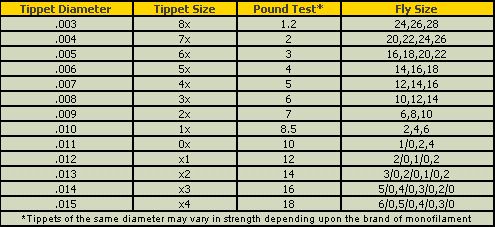As someone very new to fly tying, I've been looking for references to help me as i try to get a handle on materials and patterns.
Here are the two most used references i've put together after reading several articles, books, etc. (I'm not sure how to post them in my message, so the attachments will have to suffice)
Maybe someone else will find them useful. In general i find them to be useful reference points for starting recommendations, but certainly not hard and fast rules.
I also have a one page document which outlines the most common thread types and their applications for UNI, UTC, Flymaster, and Veevus which helps me better understand what threads i might actually need to buy and which ones i can swap out for various recipes that are out there. I would post everything, but i don't know how (or if it's even allowed) to post documents to the forum. hope this helps.

